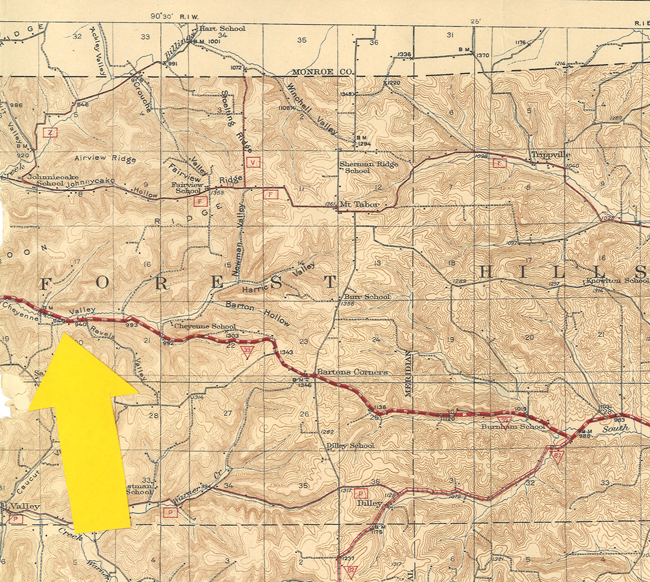Local History Topics
Cheyenne Valley
Museum Notes
For the week of 2/14/2021
by Kristen Parrott, curator
Here in Vernon County, we often look at the Cheyenne Valley community of 100+ years ago when we talk about Black history. A state historical marker in Hillsboro describes Cheyenne Valley as the home of “Wisconsin’s largest rural African American settlement in the 19th century.”
Over the years a number of stories about Cheyenne Valley people have been told here in this column, and I thought that today it would be useful to look more closely at exactly where the place is.
Cheyenne Valley is an area in the northeast of the county between Ontario and Hillsboro, in the western part of Town of Forest along and around Highway 33. The valley appears by name on a 1928 topographic map of Vernon County. Today the name “Cheyenne” is attached to a little road branching off south of Hwy. 33 in Section 20.

1928 map showing the location of Cheyenne and Revels Valley
I don’t think anyone knows why the valley is called “Cheyenne”, and there is no apparent connection with anyone from the Cheyenne tribe. Centuries ago the Cheyenne people lived in what is now Minnesota, before they were pushed west and south onto the plains. Today the Northern Cheyenne live in Montana, and the Southern Cheyenne live in Oklahoma.
Another name for the general area is Revels Valley, named for one of the largest families who lived there, the Revels family. According to that same 1928 topographic map, Revels Valley is actually a separate valley extending southeast from Cheyenne Valley, in Sections 20 and 21. It corresponds with today’s Bugbee Hollow.
But looking at old plat maps, noticing who lived where, it seems that much of the Town of Forest can be examined when we talk about Black history, not just the Cheyenne and Revels Valleys. Sometimes when we talk about the “Cheyenne Valley community”, we are really referring to people and places all around Forest, and even into nearby Towns.
Also, while some of the early settlers of Cheyenne Valley were African Americans, others were of multi-racial, multi-ethnic heritage, and still others were European Americans. When we talk about the area being home to a Black community, that doesn’t mean we have forgotten the other, non-Black members of the community.
Because there were so few concentrations of land-owning Black farmers in 19th century rural Wisconsin, the story of African Americans in Cheyenne Valley attracts attention. And deservedly so, I think.

 MENU
MENU